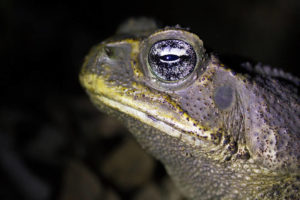Massive algae blooms that devastate ocean life have been recorded since antiquity—and they are getting worse.
Real life isn’t so tidy. Currently, there is no force, biological or otherwise, capable of stopping the algae blooms that are attacking coastal waters around the world with frightening regularity, turning thousands of square miles into odoriferous graveyards of dead and rotting fish. In the U.S., one of the chief culprits is the Karenia brevis algae, a common marine microorganism that blooms when exposed to sunlight, warm water and phosphorus or nitrates. The result is a toxic sludge known as a red tide, which depletes the oxygen in the water, poisons shellfish and emits a foul vapor strong enough to irritate the lungs.
The red tide isn’t a new phenomenon, though its frequency and severity have certainly gotten worse thanks to pollution and rising water temperatures. There used to be decades between outbreaks, but since 1998 the Gulf Coast has suffered one every year.
The earliest description of a red tide may have come from Tacitus, the first-century Roman historian, in his “Annals”: “the Ocean had appeared blood-red and…the ebbing tide had left behind it what looked to be human corpses.” The Japanese recorded their first red tide catastrophe in 1234: An algae bloom in Osaka Bay invaded the Yodo River, a major waterway between Kyoto and Osaka, which led to mass deaths among humans and fish alike.
The earliest reliable accounts of red tide invasions in the Western Hemisphere come from 16th-century Spanish sailors in the Gulf of Mexico. The colorful explorer Álvar Núñez Cabeza de Vaca (ca. 1490-1560) almost lost his entire expedition to red tide poisoning while sailing in Apalachee Bay on the west coast of Florida in July 1528. Unaware that local Native American tribes avoided fishing in the area at that time of year, he allowed his men to gorge themselves on oysters. “The journey was difficult in the extreme,” he wrote afterward, “because neither the horses were sufficient to carry all the sick, nor did we know what remedy to seek because every day they languished.”
Red tides started appearing everywhere in the late 18th and early 19th centuries. Charles Darwin recorded seeing red-tinged water off the coast of Chile during his 1832 voyage on HMS Beagle. Scientists finally identified K. brevis as the culprit behind the outbreaks in 1946-47, but this was small comfort to Floridians, who were suffering the worst red tide invasion in U.S. history. It started in Naples and spread all the way to Sarasota, hanging around for 18 months, destroying the fishing industry and making life unbearable for residents. A 35-mile long stretch of sea was so thick with rotting fish carcasses that the government dispatched Navy warships to try to break up the mass. People compared the stench to poison gas.
The red tide invasion of 2017-18 was particularly terrible, lasting some 15 months and covering 145 miles of Floridian coastline. The loss to tourism alone neared $100 million. Things are looking better this summer, fortunately, but we need more than hope or luck to combat this plague; we need a weapon that hasn’t yet been invented.






